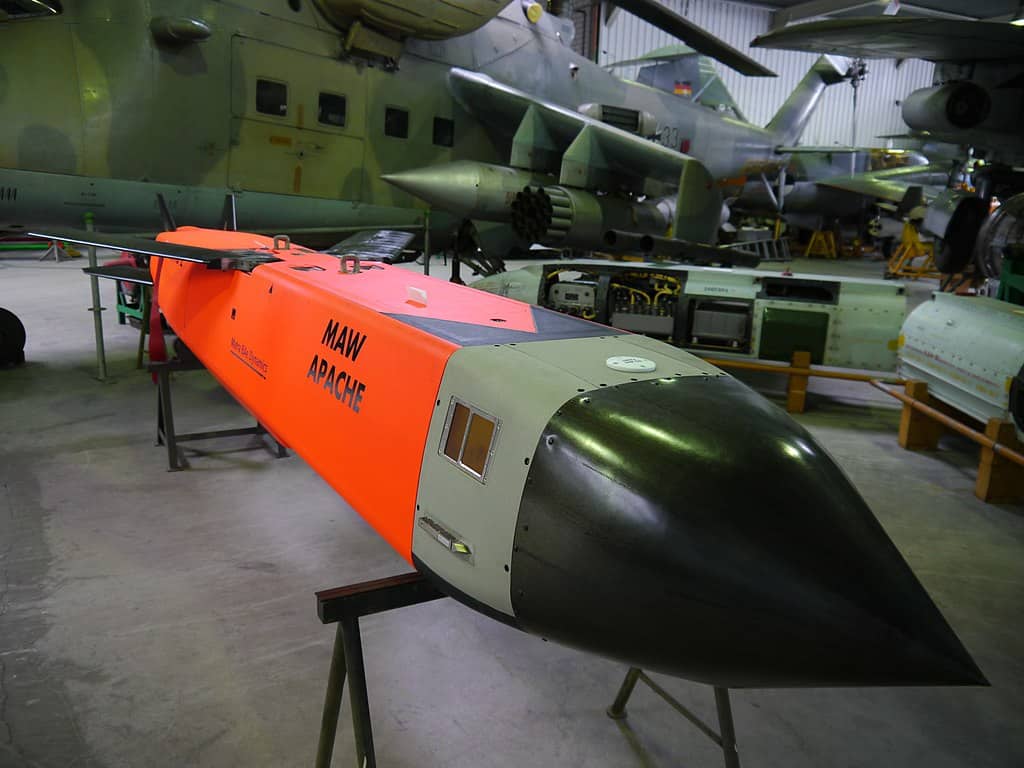
The Apache Anti-Runway Cruise Missile is specifically designed for high-precision strikes against critical infrastructure such as airfields and runways. Manufactured by MBDA, the Apache missile belongs to a specialized class of munitions intended for disabling strategic assets rather than general-purpose bombing. By focusing its destructive force on runways, the missile renders them unusable for enemy aircraft, significantly degrading the adversary’s air capabilities.
Developed with advanced targeting systems and designed to evade enemy defenses, the missile uses a combination of inertial navigation and satellite guidance to ensure pinpoint accuracy. Its warhead is optimized to create craters and fragmentation damage on reinforced concrete surfaces, which are commonly used in runway construction.
Apache Missile Design and Features
The Apache missile incorporates state-of-the-art guidance systems, which include a combination of inertial navigation and GPS technology. These systems ensure the missile’s trajectory remains accurate even in contested environments where electronic countermeasures may be deployed.
The missile’s warhead is specifically engineered for runway denial; it includes a penetrating component that breaches reinforced concrete and creates substantial craters, rendering the surface inoperable. Furthermore, its low radar cross-section (RCS) design minimizes detectability by enemy radar systems, enhancing the missile’s survivability and effectiveness in reaching its target. This stealth capability is complemented by its robust construction, allowing it to withstand high-speed travel and the forces encountered during penetration.
Operational Capabilities of the Apache Cruise Missile
The Apache Anti-Runway Cruise Missile is a strategic weapon for achieving airfield denial objectives. By incapacitating runways, it forces adversaries to relocate or limit their aerial operations, giving allied forces a significant tactical advantage. Its precision targeting minimizes collateral damage, focusing its destructive potential on critical infrastructure rather than broad, indiscriminate strikes.
With a substantial standoff range, the missile can be deployed from a variety of platforms, including aircraft, naval vessels, and ground-based systems, ensuring flexibility in mission planning. The weapon’s design allows it to operate effectively in heavily defended environments, using stealth and advanced navigation to evade enemy air defenses and deliver its payload with unmatched accuracy.




















